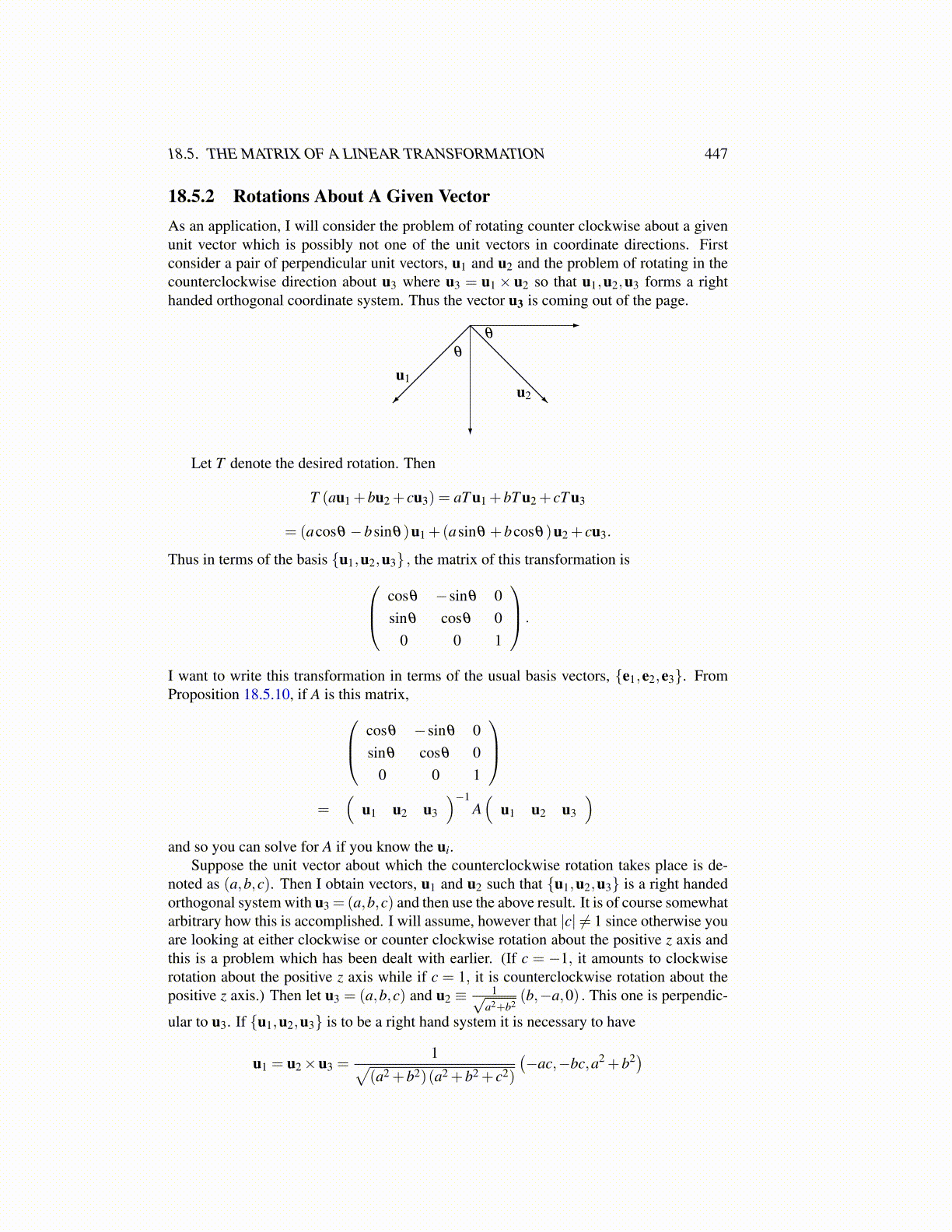
18.5. THE MATRIX OF A LINEAR TRANSFORMATION 447
18.5.2 Rotations About A Given VectorAs an application, I will consider the problem of rotating counter clockwise about a givenunit vector which is possibly not one of the unit vectors in coordinate directions. Firstconsider a pair of perpendicular unit vectors, u1 and u2 and the problem of rotating in thecounterclockwise direction about u3 where u3 = u1× u2 so that u1,u2,u3 forms a righthanded orthogonal coordinate system. Thus the vector u3 is coming out of the page.
θ
θ
u1u2
Let T denote the desired rotation. Then
T (au1 +bu2 + cu3) = aT u1 +bT u2 + cT u3
= (acosθ −bsinθ)u1 +(asinθ +bcosθ)u2 + cu3.
Thus in terms of the basis {u1,u2,u3} , the matrix of this transformation is cosθ −sinθ 0sinθ cosθ 0
0 0 1
.
I want to write this transformation in terms of the usual basis vectors, {e1,e2,e3}. FromProposition 18.5.10, if A is this matrix, cosθ −sinθ 0
sinθ cosθ 00 0 1
=
(u1 u2 u3
)−1A(
u1 u2 u3
)and so you can solve for A if you know the ui.
Suppose the unit vector about which the counterclockwise rotation takes place is de-noted as (a,b,c). Then I obtain vectors, u1 and u2 such that {u1,u2,u3} is a right handedorthogonal system with u3 =(a,b,c) and then use the above result. It is of course somewhatarbitrary how this is accomplished. I will assume, however that |c| ̸= 1 since otherwise youare looking at either clockwise or counter clockwise rotation about the positive z axis andthis is a problem which has been dealt with earlier. (If c = −1, it amounts to clockwiserotation about the positive z axis while if c = 1, it is counterclockwise rotation about thepositive z axis.) Then let u3 = (a,b,c) and u2 ≡ 1√
a2+b2(b,−a,0) . This one is perpendic-
ular to u3. If {u1,u2,u3} is to be a right hand system it is necessary to have
u1 = u2×u3 =1√
(a2 +b2)(a2 +b2 + c2)
(−ac,−bc,a2 +b2)